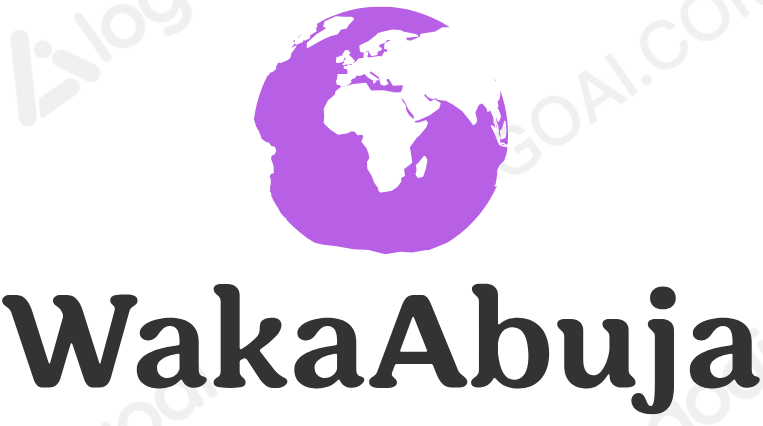TL;DR
Explore Nigeria’s most breathtaking mountains across seven states, including Adamawa’s Mount Dimlang and Taraba’s Chappal Waddi.
Discover top hiking spots, expert climbing tips, and how to access these natural wonders. Whether you’re a seasoned trekker or a casual hiker, this guide offers detailed insights, local experiences, and practical advice to make your adventure unforgettable.
Adamawa State: The Pinnacle of Nigerian Peaks
Adamawa is home to some of Nigeria’s highest and most challenging mountains, including Mount Dimlang and the Adamawa-Mandara Mountains.
Mount Dimlang (Shebshi Mountains)
Standing tall at 2,042 meters (6,699 feet), Mount Dimlang is the highest peak in the Shebshi range and a must-visit for serious hikers. The climb is demanding, with rugged terrain best suited for experienced trekkers. The panoramic views from the summit are breathtaking, revealing lush valleys and rolling hills that stretch beyond the horizon.
Climbing Tips: Visit during the dry season (November to March) for safer trails. Hire a local guide for navigation and cultural insights. Pack enough water and sturdy hiking boots.
Access: The base is accessible from Yola, Adamawa’s capital, which has good road and air connections.
Chappal Waddi (Adamawa-Mandara Mountains)
Known as the highest mountain in Nigeria and West Africa at 2,419 meters (7,936 feet), Chappal Waddi is nicknamed the “Mountain of Death” due to its challenging ascent. Located near the Cameroon border on the Mambilla Plateau, this mountain offers a rare blend of adventure and biodiversity.
Climbing Tips: Prepare for a strenuous climb with unpredictable weather. Engage local guides familiar with the terrain and wildlife. Carry warm clothing and sufficient supplies.
Access: Reachable via the Gashaka-Gumti Forest Reserve; best accessed through the Mambilla Plateau region.
Kogi State: Historical Peaks and Scenic Hills
Kogi offers a more accessible mountain experience with sites rich in history and culture.
Mount Patti
At 458 meters (1,503 feet), Mount Patti is a gentle climb with significant historical importance. It is said to be the place where Nigeria got its name, attributed to Flora Shaw, the wife of former Governor-General Lord Lugard. From the summit, you can see the entirety of Lokoja, making it a favorite for tourists and locals alike.
Climbing Tips: Ideal for beginners and families. Visit early morning to avoid midday heat. Bring a camera for stunning panoramic shots.
Access: Located on Ado Ibrahim-Panti Road, Lokoja. Easily reachable by car or local transport.
Udi Hills
Though technically in Enugu, Udi Hills extends into the Kogi region and offers serene hiking trails with lush greenery and panoramic vistas. It’s perfect for casual hikers and photography enthusiasts.
Climbing Tips: Wear comfortable hiking shoes. Visit during the dry season for the best experience. Early mornings offer cooler temperatures and beautiful sunrises.
Access: Reachable by car from Enugu city, with local transport options available.
Plateau State: The Home of Shere Hills
Plateau State is famous for the Shere Hills, a cluster of hills that attract hikers and campers alike.
Shere Hills
Located near Jos, the Shere Hills rise to about 1,829 meters and are considered some of the most scenic hills in Nigeria. The terrain offers a mix of steep climbs and gentle slopes, ideal for both intermediate and advanced hikers.
Climbing Tips: Best hiked during the dry season. Carry plenty of water and snacks. Camping overnight is popular, so bring appropriate gear.
Access: Easily accessible from Jos city, with local guides available for hire.
Taraba State: The Majestic Adamawa-Mandara Range
Taraba is home to Nigeria’s highest mountain, Chappal Waddi, and other notable hills within the Adamawa-Mandara range.
Chappal Waddi
Also known as the “Mountain of Death,” Chappal Waddi stands at 2,419 meters and offers a challenging climb through dense forests and rugged terrain. It is a haven for adventure seekers and nature lovers.
Climbing Tips: Engage experienced local guides. Prepare for sudden weather changes and steep ascents. Carry sufficient food, water, and warm clothing.
Access: Accessible from the Mambilla Plateau region; best reached via Jalingo, the state capital.
Niger State: Hills and Natural Escapes
Niger State offers several hills and natural formations that are perfect for day hikes and nature walks.
Bosso Hills
Located near Minna, the Bosso Hills provide gentle hiking trails and excellent spots for picnics and photography. The hills are less crowded, offering a peaceful retreat into nature.
Climbing Tips: Ideal for beginners and families. Visit during the dry season for the best experience.
Access: Easily accessible by road from Minna city.
Cross River State: Lush Highlands and Waterfalls
Cross River is known for its rich biodiversity and stunning landscapes, including the Sankwala Mountains and numerous waterfalls.
Sankwala Mountains
These mountains offer moderate hiking trails surrounded by thick forests and spectacular views. Nearby waterfalls add to the scenic beauty, making it a favorite for eco-tourists.
Climbing Tips: Wear insect repellent and sturdy boots. Guided tours are recommended to explore safely.
Access: Located near Obudu, accessible via Calabar city.
Bauchi State: Hills and Hiking Adventures
Bauchi boasts several hills and mountain ranges, such as the Mbula Hills and Dumi Hills, popular among hiking enthusiasts.
Mbula Hills
These hills offer moderate trails with beautiful natural scenery. The area is less commercialized, providing a raw hiking experience with opportunities to spot local wildlife.
Climbing Tips: Best visited with a local guide. Carry enough water and prepare for uneven terrain.
Access: Reachable from Bauchi city by road.
Essential Climbing Tips for Nigeria’s Mountains
- Plan for the Dry Season: November to March offers the safest and most enjoyable hiking conditions across Nigeria.
- Hire Local Guides: They provide invaluable knowledge of the terrain, wildlife, and cultural heritage.
- Wear Proper Footwear: Sturdy hiking boots with good grip are essential for rocky and uneven paths.
- Pack Essentials: Water, snacks, sunscreen, insect repellent, and a basic first aid kit.
- Respect Local Communities: Engage respectfully with locals and support community tourism initiatives.
- Check Weather Forecasts: Mountain weather can change rapidly—be prepared for sudden rain or temperature drops.
Find These Mountains on the Map
*Interactive map showing key mountain locations across Nigeria’s Adamawa, Kogi, Plateau, Taraba, Niger, Cross River, and Bauchi States.
Frequently Asked Questions
What is the highest mountain in Nigeria?
Chappal Waddi in Taraba State is the highest mountain in Nigeria, standing at 2,419 meters (7,936 feet). It is part of the Adamawa-Mandara mountain range near the Cameroon border.
Which Nigerian mountains are best for beginner hikers?
Mount Patti in Kogi State and Udi Hills near Enugu are excellent for beginners due to their moderate elevation and accessible trails.
When is the best time to hike Nigerian mountains?
The dry season from November to March is ideal for hiking in Nigeria, as trails are drier and weather conditions are more stable.
Are there guided tours available for these mountains?
Yes, many mountains, especially Mount Dimlang, Chappal Waddi, and Shere Hills, offer guided tours. Hiring a local guide enhances safety and enriches your hiking experience.
What gear should I bring for mountain hiking in Nigeria?
Essential gear includes sturdy hiking boots, water, snacks, sun protection, insect repellent, a first aid kit, and appropriate clothing for variable weather.
Final Tip: Always respect the natural environment and local cultures during your hikes. Leave no trace, support community tourism, and prioritize safety to ensure these magnificent mountains remain a treasure for generations to come.
WakaAbuja has made every effort to ensure that the information in this post was correct at the time of publication. However, we do not assume any liability caused by errors such as pricing, hours, or location details.
Please consult official websites or social media pages for the most up-to-date information.




